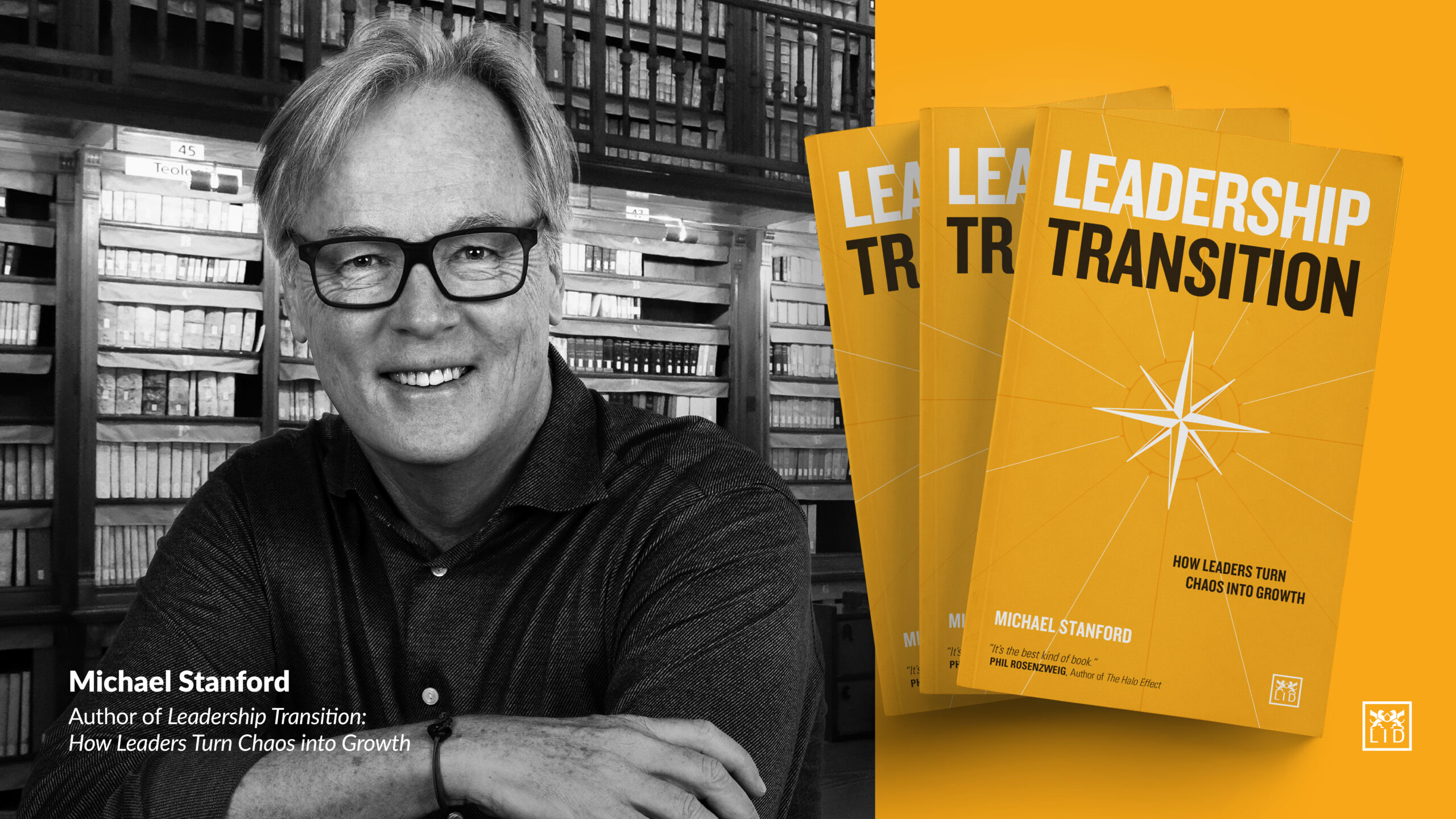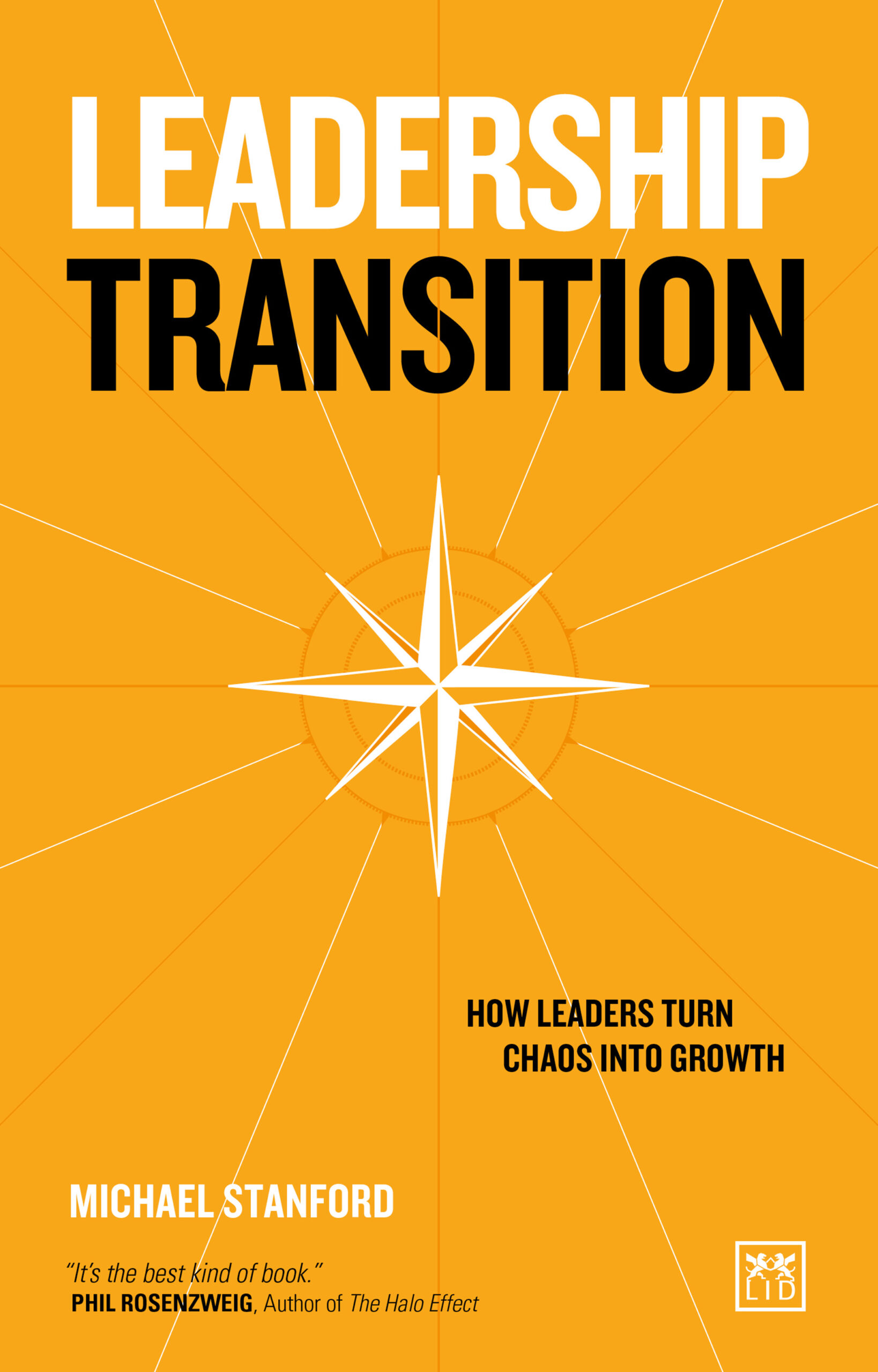|
The Four Stages of Personal Transformation with Michael Stanford
The Four Stages of Personal Transformation

By Guest Contributor Michael Stanford
Author of Leadership Transition, Michael Stanford, reveals the long and steady process towards transforming our core narratives.
One of the most curious characteristics of leadership development work is how often we promise personal transformation. In my business school days, we used the phrase ‘personal transformation’ as if it were both the highest goal of leadership development and achievable through a 4- or 5-day leadership development program. When I left the business school world to dive into the transformative possibilities of leadership transitions, I was sceptical that conventional leadership development could ever lead to true personal transformation. It turns out that the scepticism was well-founded: transformation typically happens at the end of a long process, and there is no skipping steps along the way.
Transformation: A definition
A useful definition of transformation comes from clinical work in posttraumatic growth, where researchers think of trauma as any event or experience that destroys important aspects of our core narratives. We all have inner maps of ourselves and of how the world works. These maps come in the form of narratives, stories that sit inside and outside of our conscious thought, and the more essential the narrative is to our sense of certainty and safety in the world, the more difficult it is to give up, even when experience tells us it is false. These maps dictate what we believe and what we value, and they have a powerful hold over how we behave.
Transformation happens when we change our essential inner maps. Change our maps and we change our behaviour. Posttraumatic growth research indicates that four inner narratives are especially important for our inner map-making, and so our efforts at personal transformation should focus on these narratives.
The first transformation narrative is the narrative of our personal philosophy of life. We can think of this as our philosophy of what makes for a life well-lived. In leadership, it’s our orientation: where we are headed and why we are headed that way, the point of us, or the difference we want to make because we are leading beyond the conventional key performance indicators. Our orientation is our deepest sense of what success means for us, in a particular role, context or situation.
The second transformation narrative is the narrative of our roots. Our roots are our most important beliefs and values, the things we hold true in our lives that guide how we behave. Our root narratives are partly instinctive, partly taught, partly built over experience and reflection. They are deeper than the usual one-word answers we often give when we are asked about our values (integrity, trust, respect, and collaborationare usually top of the list when we ask this question to executives). They are best expressed as a complete thought rather than a word. For example, my root narratives include: Organisations have a duty to help their leaders to grow, to not set them up for failure. Leaders are best served when they demand as much from the organization as it demands from them. Leadership is a wonderful laboratory for personal exploration and growth, and organizations can often get in the way of letting leaders express themselves in their best form.
The third transformation narrative is the narrative of our relationships, especially the relationships we value most. In life, two essential relationships are the relationships we have with our secure bases, and the relationship we have with ourselves. In leadership, a third important relationship narrative is the narrative of our relationship with the organization we serve. All three of these narratives define who we value, which relationships we nurture (or should nurture), and which relationships deserve less of our time.
The fourth and final transformation narrative is the narrative of our resources. Our resources are the talents and skills we have that enable us to make the difference we want to make. Some of them are innate, some are developed, all are essential to how we survive in and eventually shape the world around us. The narrative of our resources tells us what gives us energy, what gives us confidence, and, importantly, what about us needs strengthening if we are going to make more of the kind of difference we want to make.
How easy is it to explore and change our essential narratives? In almost all cases we need either a tremendous shock to our narrative system or long, slow, steady work to transform our core narratives. In both cases, transformation comes at the end of a four-stage process. The extent to which leadership development leads to important personal transformation is the extent to which we reshape our core narratives through these four stages.
Step 1: Confession
Since the four stages come from clinical practice in analytical psychology, I’ll borrow some of its language to explain the essentials of each step. Confession is the way we articulate that something in us isn’t the way we would like it to be. Although there is a religious sense to the idea of confession – I ‘confess’ my sins so that they may be forgiven – in clinical work confession is simply an expression that we would like something about ourselves or about how we live our lives to change. In our transitions work, confession might take the form of the ordinary or the dramatic, depending on the importance of the inner maps we want to redraw.
Confession often starts with revealing something about ourselves that we worry might make us unacceptable to the people around us (in leadership, to our colleagues; in group therapy, to the group; in individual therapy, to the therapist). It’s worth noting that confession often leads to a temporary euphoria, partly because we find that our confessed ‘faults’ don’t make us unacceptable, and partly because by confessing we might hope that we’ve handed over some of the burden of our transformation to the therapist. I remember in my business school years that we were very good at encouraging confession and that our high program evaluation scores reflected the temporary euphoria that followed. Unfortunately, the positive emotion that can come from confession is best used to fuel the hard work of the next three stages. Confessions signal the beginning of transformative work, not the end of it.
Step 2: Elucidation
If confession is the expression of a desire for inner change, elucidation is the exploration of what lies beneath the behaviour or mindset that needs changing. Confession takes the form of a statement. Elucidation takes the form of a question: specifically, of the question what’s really going on here? In leadership development, an example of confession might be: I want to stop withholding my points of view when they are controversial and I am around authority figures who will challenge me. Elucidation explores a series of questions intended to dive below the surface of the offending behaviours: how is controversy handled in your culture? How was it handled by your parents and other authority figures in your youth? How have you been punished or rewarded for speaking up? Are there particular figures that cause you to restrain yourself, and what do they represent to you? Are there topics that are important enough to you that you will always speak up about them, no matter who around you might disagree?
Step 3: Education
Elucidation gives us a clearer sense of the transformation territory we are exploring. The third step of transformation, education, is the first step towards becoming different. Education follows elucidation’s question of ‘what’s really going on here’ with another question: if that’s what’s going on here, what do we know about how to change it? Education is exploring what all our research into human behaviour tells us about the specific change we want to make in ourselves. In the example above, education is understanding how our minds are designed to respect authority, about the importance of hierarchy in providing order where chaos might once have reigned, about how an important transition in our own maturity is when we step away from being shaped by the chaos around us and instead shaping it. Education in this example is understanding the difference between a parent-child relationship and an adult-adult relationship, even with people who are higher in the hierarchy than we are. Education provides us with insight and knowledge. It also provides us with possible approaches we can take to rewrite our inner narratives so that they better reflect the person we want to become.
Step 4: Transformation
After confession, elucidation and education comes transformation, the (usually) small steps we take to practice becoming the person we want to become. Under normal circumstances, we take on this practice voluntarily and slowly, one small step at a time, so that we can see what works and what doesn’t work, and so that we aren’t overwhelmed by the challenge of narrative rewriting. In our example, transformation might take place when I decide to practice the occasional airing of controversial opinions, perhaps first with friendlier audiences and then, as I build the muscle, with people who are more likely to challenge my opinion. With some discipline and persistence, I start to understand how to become more skilful in presenting myself and my controversial opinions, when to do so forcefully and when a softer approach might work better. It might be that I practice my skill-building so slowly that I don’t notice that I’ve changed until many months after the journey started, when I realize that I am showing up in different ways than I did before. My old narratives have been replaced by new ones, and my new ones have become so deeply engrained that they feel like they have always been part of me.
Speeding Up the Process?
Can the process of transformation be accelerated? Yes, but only under very specific and sometimes dangerous circumstances, neither of which are appropriate to conventional leadership development work. The best way to accelerate the transformation process is to make it personal, to support it with individual coaching (or, as the posttraumatic growth would say, to support it with expert companionship), and to focus only on one or two narratives at a time. Cases of trauma, where growth can sometimes be found as new narratives, are formed in the wake of those that have been destroyed, the transformation process is best left to professional trauma clinicians. Digging up trauma for the sake of transformation in conventional leadership development risks leaving the leader raw, confused, and uncertain about where to get the guidance he or she needs. So, with speed comes risk, and in leadership development the risks are usually not worth taking. Far better to take on the four steps of transformation slowly and methodically than to risk the dangers of going too quickly.
ABOUT THE AUTHOR
Suggested Reading
 This groundbreaking book explains how we can use chaos as fuel for growth. Integrating clinical insights with personal stories and case examples gathered over three decades as a leadership practitioner, researcher, consultant and coach, Michael Stanford helps leaders understand why we react the way we do when the challenges around us feel too heavy to bear.
This groundbreaking book explains how we can use chaos as fuel for growth. Integrating clinical insights with personal stories and case examples gathered over three decades as a leadership practitioner, researcher, consultant and coach, Michael Stanford helps leaders understand why we react the way we do when the challenges around us feel too heavy to bear.

 Michael Stanford is the founder and Managing Director of Summit Leadership, a boutique leadership development organization which supports leaders and their organizations through significant change. He was the head of the Transformational Leadership Practice (EMEA) at Korn Ferry. Prior to that, he worked as a business leader and consultant in a leading business school. Michael resides in Switzerland.
Michael Stanford is the founder and Managing Director of Summit Leadership, a boutique leadership development organization which supports leaders and their organizations through significant change. He was the head of the Transformational Leadership Practice (EMEA) at Korn Ferry. Prior to that, he worked as a business leader and consultant in a leading business school. Michael resides in Switzerland.